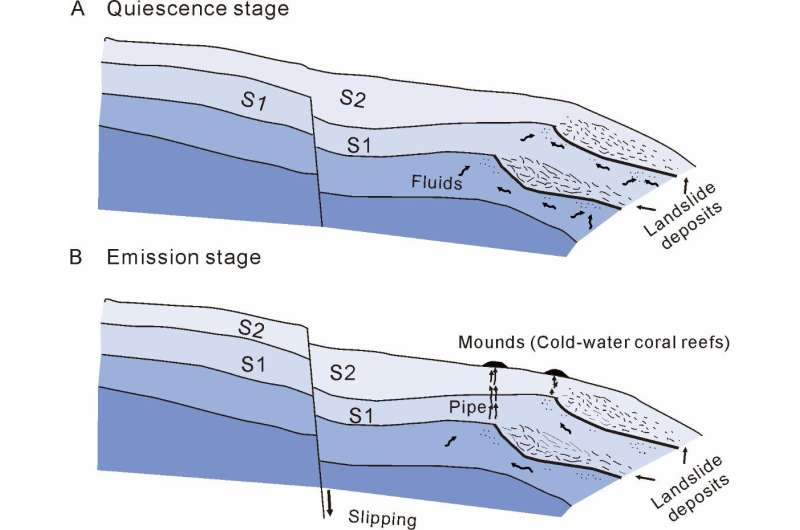Reassessing geohazards of buried landslide deposits and their impacts on seabed ecosystems

Submarine landslides are a geohazard that can affect oil and gas drilling and submarine pipeline and cable construction. They commonly occur where widespread fluid seepage exists.
It is generally believed that submarine landslides are easily induced by fluid seepage, and buried landslide deposits are in a steady state. However, are buried landslide deposits safe? Can buried landslide deposits induce fluid seepage? These questions still remain unresolved at present.
Recently, a research team led by Prof. Dong Dongdong from the Institute of Oceanology of the Chinese Academy of Sciences (IOCAS) has reassessed the geohazards of buried landslide deposits and their impacts on the seabed ecosystem by multi-discipline studies of marine geophysics and marine biology.
The study was published in Geophysical Research Letters on March 2.
Using seismic reflection data, the researchers found many nearly vertical seismic pipes in the shallow strata at the northwest shelf margin of the South China Sea. These pipes connected to seabed mounds and buried landslide deposits.
The statistical results showed that more than 96% of seafloor mounds in the area covered by three-dimensional (3D) seismic data linked to the head and lateral scarps of buried landslide deposits through pipes. The seabed video and species analysis of derived rocks showed that seabed mounds were cold-water coral reefs.
The researchers revealed that differential compaction between buried landslide deposits and surrounding strata induced the release of overpressure fluids, and then fluids migrated along the bottom shear surface of landslide deposits and eventually escaped from top edges of buried landslide deposits, forming hard seabed substrate for cold-water coral colonization.
"Active regional tectonic environment and enough sediment supply are also important geological setting for fluid seepage. Buried landslide deposits indirectly lead to seabed instability by inducing fluid seepage," said Chen Duanxin, first author of the study.
"This study constructs a model for the building of cold-water coral reefs in northwestern Pacific margin, where cold-water coral reefs are rarely discovered before," said Prof. Dong.
More information: Duanxin Chen et al, Widespread Fluid Seepage Related to Buried Submarine Landslide Deposits in the Northwestern South China Sea, Geophysical Research Letters (2022). DOI: 10.1029/2021GL096584
Journal information: Geophysical Research Letters
Provided by Chinese Academy of Sciences




















